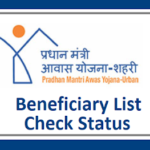Exhibitions are an excellent means of displaying your brand, products, or services to many people. To make an impression, you must ensure that your exhibition stand is eye-catching, functional, and memorable. One of the most important aspects of accomplishing this is selecting the convenient supplies for your expo stand construction.
The supplies you pick will not only impact the look and feel of your booth, but also its durability, portability, and cost. With so many supplies available, it can be overwhelming to decide which ones are good for your needs. In this article, we will guide you through the process of picking the fitting components for your exhibition stand build, including the most frequent employed elements, their benefits, and drawbacks, and how to select the proper material for your specific needs.
What materials are used in exhibition stand building?
There are a variety of supplies used in the construction of expo stands, each with its own benefits and drawbacks.
Wood
Wood is a versatile material that is utilized to create a wide range of designs and styles. It is popular for building custom-built booths and for adding warmth and character to a display. Keep in mind that wood may be heavy, which make transportation and set-up more difficult. There are several wood types used in exhibition stand building:
- Plywood is made by layering thin sheets of wood veneer together. It is lightweight, strong, and easy to work with. Plywood can be painted, stained, or laminated to develop a variety of finishes.
- MDF, or medium-density fiberboard, is made from wood fibers that are bonded together with resin. It is a cost-effective alternative to solid wood and is popular for producing flat surfaces and shapes. MDF may be painted or laminated to form a range of finishes.
- Solid wood like oak or maple, is a popular choice for custom-built expo stands. It is durable, and has a natural warmth and character that adds to the overall look and feel of a display. Remember that solid wood is heavier than other materials, which makes its transportation and installation more difficult.
- Particleboard is made from wood chips or shavings that are bonded together with resin. It is another affordable alternative to solid wood and is popular for constructing large surfaces or structures.
Metal
Metal is often used in exhibition stand construction. It is light, easy to transport, and is easily shaped into a variety of designs. Common metals employed in exhibition booths include aluminum, steel, stainless steel and brass.
- Aluminum is a thin metal that is popular for expo stand construction. It is customizable, may be easily formed into various shapes, and is resistant to rust and corrosion. Aluminum may be powder-coated, painted, or anodized to develop a range of finishes.
- Steel is a strong metal that is popular for building heavy-duty exhibition booths. It is heavier than aluminum, but is still relatively easy to work with.
- Stainless steel is resistant to rust and corrosion. It is a durable and strong metal that is workable, but is more expensive than other metals.
- Brass is a popular choice for creating a high-end look and feel in expo displays. It has a warm, golden color and can be polished to a high shine. Brass is a relatively soft metal and may not be as durable as other metals.
Glass
Glass is a popular element for developing a sleek and modern looks. It can be employed for display cases, shelving, and even as the primary component for a booth. Nonetheless, glass is fragile and is difficult to transport and install.
Foam board
Foam board is a lightweight and affordable. It is popular for forming custom shapes and designs. It is easy to work with and can be printed with high-quality graphics. However, foam boards are not as durable as other components and may might need replacement after several uses.
PVC banners
PVC banners are a popular choice for producing large-scale graphics and backdrops. They are lightweight, easy to transport, and may be printed with high-quality graphics. Bear in mind that PVC banners are not as durable as other components and may need to be replaced after many uses.
Fabric
Fabric is a versatile material that is utilized to design a range of designs and styles. It is lightweight, easy to transport, and can be printed with high-quality graphics. However, fabric may require additional hardware, for example, frames or tension systems, to construct a stable and secure display.
Composite materials
Composite goods, such as fiberglass or carbon fiber, are lightweight, durable, and easy to work with. They are popular for constructing custom shapes and designs and are employed to develop high-quality finishes. However, composite materials can be more expensive than other supplies and may require specialist knowledge to work with.
How to choose proper materials for your exhibition stand?
When it comes to building an exhibition stand, selecting the suitable supplies is crucial. The components you pick will not only affect the overall look and feel of your booth, but they will also determine the durability, flexibility, and cost of your build. Let’s discuss the factors you need to consider when selecting the right supplies for your exhibition stand build.
Budget
The first and most essential factor to consider when choosing supplies for your exhibition stand is your budget. The amount of money you have available will dictate the type and quality of items you can utilize. Make sure to allocate enough funds for the design and construction of your booth, as well as the materials and labor costs. Remember that more pricey components may save you money in the long run if it is more durable and requires less maintenance.
Durability
Exhibition stands are exposed to a lot of wear and tear, especially if you plan to attend multiple trade shows. Your supplies should be able to withstand the rigors of transportation, set up, and tear down, as well as being able to handle heavy foot traffic during the expo. Consider using the most durable metal, glass, and composite materials (fiberglass or carbon fiber).
Flexibility
Another important aspect to think about is the flexibility of your supplies. You want to choose elements that are easy to work with and can be shaped or molded to fit your design. Foam boards, cardboard, and vinyl are lightweight and easy to manipulate, making them ideal for creating custom shapes and designs.
Aesthetics
The appearance of your exhibition stand is significant in attracting potential clients and customers. Your goods should be visually appealing and complement your brand and product offerings. Some components like wood, give off a warm and inviting feel, while others like metal or glass give a more modern and sleek look. You should also consider the colors and textures of your supplies, as well as any graphics or signage that will be displayed on your booth.
Sustainability
More and more businesses are looking for sustainable options when it comes to building their expo displays. Using environmentally friendly supplies not only helps reduce your carbon footprint, but also sends a positive message to your customers about your commitment to sustainability. Some sustainable components include bamboo, recycled plastics, and biodegradable supplies like hemp or wool.
Ease of Transport
Exhibition stands need to be transported from one event to the next, so you need to choose components that are easy to load, store and transport. Lightweight materials, for instance, foam boards or PVC banners are easy to transport and can be rolled up for storage. For larger, more complex booths, modular systems made of lightweight metal or plastic are also a good option as they can be assembled and disassembled quickly and easily.
Safety
Safety is a crucial consideration when it comes to exhibition stand supplies. Your components should be fire retardant and comply with all health and safety regulations. It’s also essential to ensure that your display is sturdy and stable, especially if you have large or heavy items on display. Using steel or aluminum helps ensure your booth is structurally sound.
Reusability
If you plan to attend multiple exhibitions, you may want to consider using elements that can be recycled. This not only saves you money in the long run, but also reduces your environmental impact. Modular systems made of metal or plastic are a great option for reusability, as they are easily assembled and disassembled and might be used for multiple events.
In conclusion, choosing the right supplies for your exhibition stand build is a key aspect for creating an effective and engaging display. Think about factors such as your budget, durability, flexibility.







